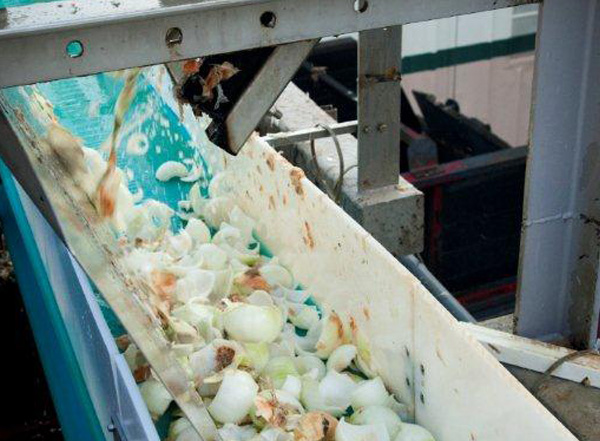

Mar 18, 2011Gills Onions adds to its sustainable power initiative
Gills Onions’ sustainability efforts have garnered national attention. The Oxnard, Calif., farm is documenting what it does and working with outside groups to track the data ¬- for internal use, to continue to improve, and external use, to help shape sustainability metrics.
The company’s biggest sustainability investment so far was the construction of an advanced energy recovery system powered by solid waste. The waste – up to 300,000 pounds a day – is turned into a liquid and goes into an anaerobic digester, which converts it to methane. The clean-burning gas can be used to power the 600-kilowatt fuel cells. The system came online last year. Construction took almost three years, but the process from idea to implementation took about a decade.
The advanced recovery system covers between 30 percent and 40 percent of the farm’s plant power needs, and saves the company about $700,000 in electricity costs a year (as well as reducing greenhouse gas emissions by up to 30,000 tons a year). The initial cost was high, but state and federal incentives covered about one third of the $9.5 million investment.
The next phase of Gills’ energy plan is the installation of a flow battery energy storage system. Flow batteries operate by having a charged electrolyte solution stored in tanks that are flowed past an ion-exchange membrane to move electrons to the reactor. The flow batteries work like fuel cells, but can be used to store energy for use later. The storage system is expected to go online in August and will consist of two 300-kilowatt flow batteries, enough to store six hours of 600 kilowatts.
Prudent Energy manufactures the flow batteries, and since the technology is new – it will be the first of its kind in California – the project will be a showcase installation that Prudent can show other customers. The system will likely be housed in its own building on Gills Onions 14-acre plant grounds, although the design is still in the planning stages.
The flow batteries are a great way to work with the power company, especially in regions with high electricity rates, said Bill Deaton, independent contractor and project manager for the project. In California, standby fees are set by the plant’s highest spike, so if that spike can be removed it can reduce the operating cost of the plant. The flow batteries will also allow the plant to store energy at night, using the power grid to run the plant when the electricity costs are lower, then discharge the flow batteries during the day when it’s expensive to run off the grid.
The flow battery project will cost between $250,000 and $500,000, with a lot of design and programming costs involved, Deaton said. The state of California offers assistance for the research and development through the California Public Utilities Commission Self-Generation Incentive Program, which supports new and emerging energy resources. Grants and partnerships with technology manufacturers help everyone by getting real-world experience with new, high-tech solutions.
“You have to get them out there in practical situations and prove them out,” Deaton said.
Once it goes online, the storage technology has the potential to save Gills Onions between $50,000 and $100,000 a month. The savings are from reducing the demand peaks during the day, Deaton said, and the flow batteries can use the standby charge to reduce the spikes from starting up machinery. The system also allows Gills to arbitrage electricity costs between night and day.
The flow batteries offer another benefit: The power generated by the reactor and flow batteries is clean. There are no fluctuations in the power supply, so the facility will see improved voltage and current.
“It does a lot to smooth out power in a production operation and cut costs,” Deaton said. “It’s a good way to condition your power.”
Gills Onions also is working toward zero waste, and recently completed a waste audit.
“We’re really making great strides in reducing waste,” said Nikki Rodoni, sustainability coordinator for Gills Onions.
The company has partnered with the Bren School of Environmental Science and Management at the University of California, Santa Barbara, for a thesis project on the zero-waste initiative, and is also working with the school on a sustainable farming strategies project. The study serves as a pilot project for the Sustainability Index for Specialty Crops, to provide feedback on the metrics being developed to measure sustainable farming.
The thesis project will provide a baseline of inputs for farming on water use, soil enhancements and management practices, pest management and energy use. The students also will quantify the environmental impacts of the inputs, looking at atmospheric emissions, water quality issues, water consumption and impacts on biodiversity.
Gills Onions will share the results with the industry, Rodoni said. It hasn’t been easy – growers see sustainability as part of their business, and some see it as a hassle when a processor tries to tell them how to be sustainable.
“It’s been a very difficult project and it will take us a couple of years to get our heads around it,” Rodoni said.
But, she said, the data will not only help growers reduce their environmental impacts, but will help them reduce costs.
“I think the results will warrant a different perspective on how growers will look at having a sustainability program, rather than seeing it as a burden,” Rodoni said.
By Scott Christie














